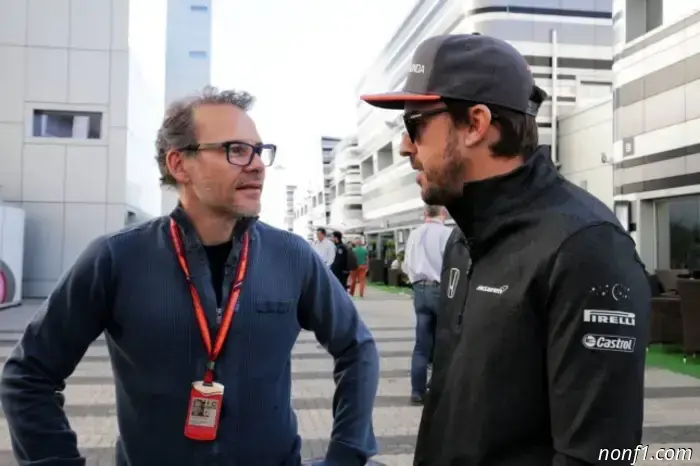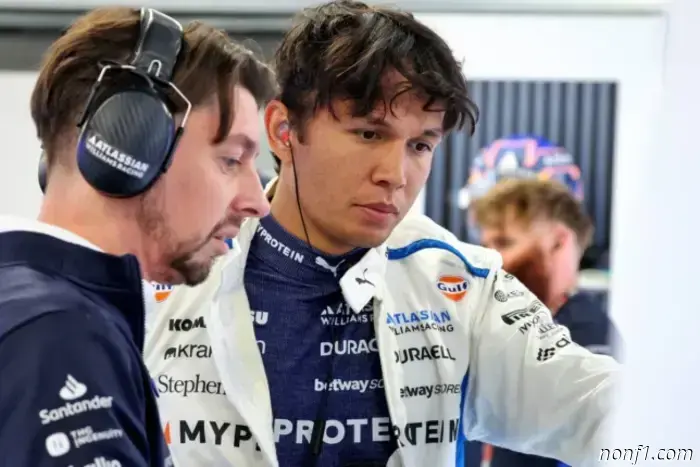
Teams present Brembo engineers with difficult challenges.
Championship teams at their bases continue to prepare for the switch to next-generation machinery, but there is almost no information on how this work is progressing or what interesting solutions their designers are creating.
Journalists from The Race spoke with Andrea Algieri, head of the customer department at the well-known Italian company Brembo, which traditionally supplies racing brake systems to Formula 1 teams, and he, within the scope of his expertise, shed light on a number of interesting trends.
Among other things, the 2026 cars will be fitted with completely new rear brakes, which is related to more efficient hybrid power unit systems. Their electrical part will be responsible for roughly 50% of the power, i.e. it should deliver nearly as much energy as the new internal combustion engines.
Brembo specialists work in close contact with all teams and, of course, are generally aware of how the process of creating new cars is progressing. In some cases they were tasked with minimizing the size of the rear brakes as much as possible.
“We see that different teams are taking different approaches,” Algieri said. “This is mainly related to the rear brakes, because the rear axle determines both the power unit design and the energy recovery systems. All of this affects the strategy teams follow, and you could say that we are, to some extent, having to work in the dark.
At the same time teams set certain requirements for us and say, ‘OK, we want braking force to be at such-and-such a level, to match these parameters. So let’s develop the most efficient brakes that fit within those limits.’
But it’s not entirely clear to us why they want to achieve some of these parameters. We see signs of some very clever solutions, if the calculations of their authors are correct. Otherwise we’ll have to redo the braking systems after the first tests or the first few races!
We are trying to prepare for that. But it’s all quite curious, and, of course, it’s a kind of new challenge after many years of stability. We see some extreme solutions being applied to the rear axle, judging by the size of the brake disc. They will be very small in diameter compared with the discs used today, and their thickness will be reduced as well.
Consequently, the teams believe that the rear axle will either hardly participate in braking, or will do so only in certain cases.”
The 2026 technical regulations do not prescribe minimum values for brake disc thickness. Article C11.3 only sets a maximum thickness, which must not exceed 34 mm, and specifies only minimum disc diameters: 325–345 mm at the front and 260–280 mm at the rear.
At the same time, another paragraph of the regulations sets parameters for brake system performance: braking torque at each wheel must be at least 2500 newton-meters, and this is without any influence from the power unit or the MGU-K motor-generator.
Algieri also added that, judging by appearances, the nature of braking on cars from different teams will also be very different:
“We expect that in some corners the brakes will not be used at all, because the car’s deceleration will be achieved by other systems. On the other hand, there will be corners where the brakes must operate under maximum loads. So we have to be ready for a very wide spread of parameters.”
All this forces Brembo’s specialists to be extremely meticulous in selecting materials for their systems, which must withstand such loads while also being able to be brought up to temperature quickly. Because the brakes will be used less regularly, there is a risk that on certain parts of the lap they will have time to cool down.
“To address this issue we applied our experience gained in Formula E,” Algieri emphasized. “There’s a similar concept there, because deceleration largely occurs via the electric motor and recovery systems… From the information we’ve received from the teams, there are certain differences in their approaches and implemented ideas, and all of this promises to be very interesting…
On slow tracks where recovery is very active, for example in Singapore, you can use the brakes more intensively and subject them to higher loads. But there are tracks like Silverstone where you work the throttle more than the brakes, and the picture will be completely different there.
But this could happen: you start braking into turn 1 while brake temperatures are still very low, and it’s possible they won’t yet be ready to work effectively. In preparing for 2026 this is the main question we are seeking to answer and trying to find the best solution for.”

Other articles
 Jacques Villeneuve recalls the dramatic events of 2007.
The 2007 season went down in history as one of the most dramatic. The McLaren drivers had the best chances of winning the title, but events unfolded so that in the end Kimi Räikkönen, racing for Ferrari, won. Jacques Villeneuve has his own take on that situation...
Jacques Villeneuve recalls the dramatic events of 2007.
The 2007 season went down in history as one of the most dramatic. The McLaren drivers had the best chances of winning the title, but events unfolded so that in the end Kimi Räikkönen, racing for Ferrari, won. Jacques Villeneuve has his own take on that situation...
 Alex Albon: There is cause for concern
Alex Albon acknowledges that next year, when Formula 1 switches to next-generation cars, Williams' progress could slow...
Alex Albon: There is cause for concern
Alex Albon acknowledges that next year, when Formula 1 switches to next-generation cars, Williams' progress could slow...
 F1 drivers' yachts could make up an entire fleet.
Many Formula 1 stars prefer to spend their vacations on the open sea on their own yachts, which, of course, match their level of income...
F1 drivers' yachts could make up an entire fleet.
Many Formula 1 stars prefer to spend their vacations on the open sea on their own yachts, which, of course, match their level of income...
 Permain: I don't see any problem if there are more sprints.
Alan Permain, recently appointed the new team principal of Racing Bulls, said he would be pleased if there were more sprint races...
Permain: I don't see any problem if there are more sprints.
Alan Permain, recently appointed the new team principal of Racing Bulls, said he would be pleased if there were more sprint races...
 IndyCar: Rumors have emerged that Herta may move to F2.
Against the backdrop of expectations that Cadillac F1 may soon confirm that Sergio Pérez and Valtteri Bottas will drive for them, amusing rumors about Colton Herta have come from across the Atlantic...
IndyCar: Prema Racing has financial problems
The Italian team Prema Racing, which debuted in IndyCar in 2025, appears to have encountered serious financial problems...
IndyCar: Rumors have emerged that Herta may move to F2.
Against the backdrop of expectations that Cadillac F1 may soon confirm that Sergio Pérez and Valtteri Bottas will drive for them, amusing rumors about Colton Herta have come from across the Atlantic...
IndyCar: Prema Racing has financial problems
The Italian team Prema Racing, which debuted in IndyCar in 2025, appears to have encountered serious financial problems...
Teams present Brembo engineers with difficult challenges.
Andrea Algeri, a specialist at Brembo, which supplies brake systems to Formula 1 teams, in an interview with The Race shed light on a number of interesting trends in the process of preparing for 2026...
